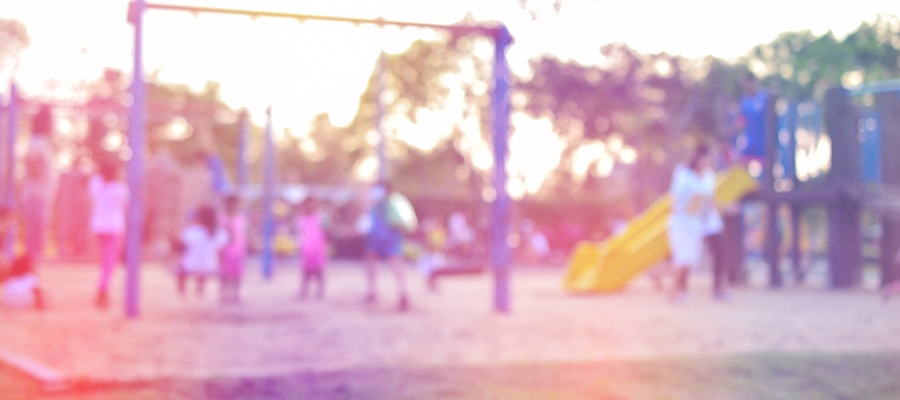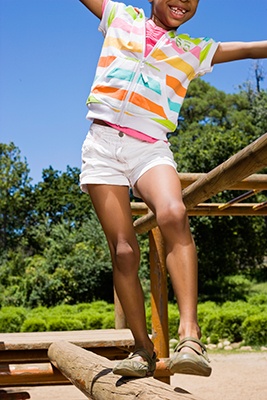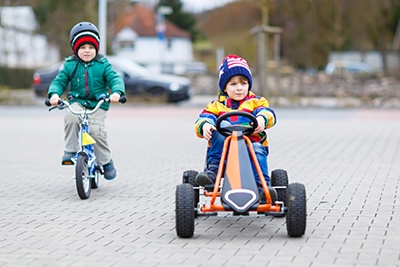Does your outdoor play equipment make the grade?
We know that playing outdoors enables children to easily engage in both moderate and vigorous physical activity such as running, skipping, jumping, climbing, chasing, lifting, balancing—even digging, splashing, and building. Playgrounds and outdoor play equipment are substantial investments, and we design and build them with the expectation that they will sustain us for many years. But that doesn’t mean we should stop thinking about them once they are erected.
Whether you’re in position to begin planning for a new playground, tackle a substantial renovation to existing play space, or make just minimal additions or changes, the following best-practice design ideas are worth thinking about.

Characteristics of successful play areas
How many of these characteristics describe your play area? It may not be practical to implement all these design ideas, but consider which traits you might be able to improve upon:

- Are equally attractive to children and adults
- Are shady in summer
- Are visually complex so children and motivated to explore
- Are “bounded,” bordered or fenced so that children cannot stray too far
- Are easily navigated with curvy main pathways that encourage chase games and visually lead children “around the next corner”
- Offer soft, multi-use lawn areas for group games
- Include small-scale, partially enclosed areas that encourage social interaction and pretend play
- Contain a varied mix of natural and manufactured elements, fixed features and loose parts to attract and satisfy the needs of diverse populations of youth
How might an organization incorporate some of these characteristics?
Play Elements
Think beyond traditional play equipment such as swings, slides and climbers. Permanent natural objects such as smooth rocks and logs increase climbing opportunities and encourage chase games like hide-and-go-seek. Landscape elements like low-growing trees can serve double duty as climbing elements. Balance beams and logs promote balance and, if moveable, also support imaginative play. A sandbox or sand/water table provides opportunities for digging and raking as well as development of spatial reasoning and other valuable math skills. “Loose parts” like blocks, logs, rocks, toy garden tools, wheeled toys, cones, chalk, hula hoops and similar materials facilitate imaginative play and encourage lifting, building, rolling…and construction of an infinite number of kid-imagined obstacle courses.

Terrain
Landscape design that partly obscures sightlines makes the space seem larger and more intriguing, exciting and attractive to children—without being too dense to block views and make caregivers anxious. Larger, open multi-purpose grassy areas spur informal group games (i.e., tag and ball games) and higher levels of physical activity. Rolling landscapes, slopes, and mounds further encourage children to actively explore, run up and down, roll, leapfrog, slide and cartwheel. Hard-surfaced pathways provide opportunities to use wheeled toys. If space is limited by your location, consider other nearby resources; some urban schools and child care centers have successfully created space-sharing agreements to utilize neighboring parking lots or other areas during designated times of day.
Shade
If the playground is to be used in the summer, deciduous shade-tree canopies that lose their leaves in the fall should cover approximately 50% of play spaces, particularly pathways. “Shade sails” can be used as shading devices (with pale, translucent fabric), perhaps combined with trees until the trees grow to an effective size. A pergola covered by climbing plants can also provide attractive shade.
Accessibility
Play spaces should engage children and adults of all abilities. Railings and handholds can be provided for children and adults with motor disabilities. Manipulative play elements such as water and sand should be elevated above the ground for wheelchair access.
You may not have the physical space or resources to create the perfect outdoor play area, but perhaps you can identify some achievable opportunities for improvement.
Interested in additional ways to support active play, both indoors and out? Check out this earlier blog post on encouraging physical activity. GET MORE PHYSICAL ACTIVITY IDEAS
Topics: Outdoor Activity, Physical Activity
Subscribe for more
Want more ideas for healthy schools, workplaces, child care providers, and families? Subscribe to our blog for weekly tips delivered right to your inbox!
Prevent and manage childhood obesity: a partnership with your primary care doctor NEXT »
Healthy vending machine options are possible
